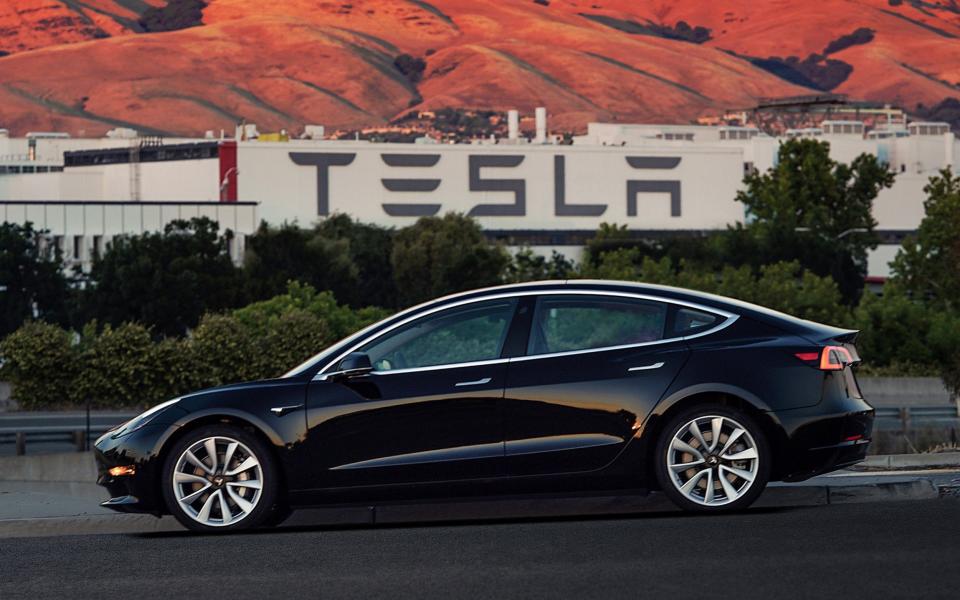What's the difference between an electric car (EV), a hybrid and a plug-in hybrid?

A ban on conventional petrol and diesel cars comes into effect atthe start of 2030. The details have yet to be properly confirmed, but it's safe to assume that the powertrain we've been used to for the past century or so — an internal combustion engine driving the wheels via a mechanical transmission — will one day seem as old-fashioned as trafficators, carburettors and the manual choke.
Replacing the status quo is a patchwork of alternatives, each with their own merits and drawbacks. As we understand it, all cars will need to be capable of some zero-emission driving; moving without emitting any pollution from the tailpipe. That would include both battery-electric and some hybrid cars, as well as a handful of alternatives that remain niche products at the moment.
But what's the difference between an electric car and a hybrid? Why are some hybrids different to others? Is there anything else available? And is a hybrid really an electric car?
There's a great deal of confusion surrounding this. Car manufacturers' primary concern is selling cars rather than informing the public about technology, which is why general understanding of these issues can be hazy. What's more, knowledge takes a rather circuitous route from the engineering laboratories to the press (via marketing departments and PR agencies) so some of the information printed on the subject is simply wrong.
What is an electric car, or ‘EV’?
An electric car is one that runs on, and is ‘charged up’ with, electric power. Petrol or diesel is never used to refuel an electric car. The electricity that powers an electric car is stored in batteries before being used by electric motors to drive the car’s wheels; the addition of an fossil fuel engine would make it a hybrid.
Hybrid cars, meanwhile, have electric elements to their powertrains but cannot be considered ‘electric cars’ due to the presence of a petrol engine. This has caused some confusion recently, not least because certain manufacturers are very keen to describe as "electric" a car which still burns fossil fuels to move; misleading at best, and deceptive at worst. Take with a pinch of salt any claims that a car is "electrified", too, as this refers to a very wide range of technologies.

Electric cars are becoming commonplace thanks to certain financial advantages, including government grants and the lower cost of “filling up” compared to a tank of petrol. They’re considered better for the environment due to the fact they emit no exhaust gases. Popular examples include the Kia Niro, Tesla Model 3 and Volkswagen ID.3.
Electric vehicles have several key benefits when compared to ordinary petrol and diesel cars, as well as increasingly popular hybrid cars. Electric vehicles emit no pollution in use, which means they have a much smaller local environmental impact. They operate very quietly and are generally extremely easy to drive, with no real gearbox to speak of and a great deal of power at low speeds. You can drive an electric car on an automatic-only driving licence.
Most importantly, they can be charged up at home. You can technically 'refuel' an electric car using an ordinary three-prong plug wherever you find a socket, though modern EVs will take the best part of a day to recharge. Most owners choose to install a fast wall charger which will enable them to completely recharge their car over six to ten hours, i.e. overnight. Faster chargers, such as those found in car parks and at petrol stations, are also useful for EV owners.

Disadvantages include that need to ‘charge’ an electric vehicle, which takes far longer than filling a tank of petrol or diesel – usually several hours in comparison to a couple of minutes. Some electric cars can be half-charged in a shorter time, but this will ordinarily be around 45 minutes, and the process requires more sophisticated infrastructure than you'd have installed at home.
During charging, the vehicle must be physically connected to a plug socket, which makes EV ownership difficult for a lot of buyers unless you own a driveway or have a charging point at work.
Environmentally, there are still big questions as to where the electricity for electric cars will come from, with some critics pointing out that the indirect emissions from electric vehicles are comparable to those of a petrol-electric hybrid. And as with any car, much of its lifecycle carbon output is generated as it's being built. We're optimistic that the building process and indeed the sources of electricity will become cleaner, but for now the environmental cost of buying and using an electric vehicle is still significant.
What is a hybrid, a plug-in hybrid or mild hybrid car?
The term ‘hybrid’ is technically quite vague, but in the context of cars almost always refers to a petrol-electric powertrain. This means the car uses a combination of electricity stored in batteries and petrol stored in a tank to drive the wheels. The details of this arrangement will vary from car to car.
A hybrid vehicle will almost always be able to charge its own batteries using the petrol engine. In some cases, this is all the petrol engine is there for – to recharge the batteries, which power the electric motors. In other types of hybrid, the petrol motor drives the wheels directly, but an additional battery/motor combination adds some electric drive.

In ‘mild hybrids’, the amount of electric power that drives the wheels is limited. The car won’t normally drive on electric power alone, but a small electric motor can be used to fill in the gaps. These systems are cheaper than ‘full hybrid’ models but have a much smaller benefit it terms of emissions.
Some hybrid cars are what’s known as ‘plug-in’ hybrids. As the name suggests, these cars can be plugged-in to the national grid by means of a cable, as you would an electric car. This will charge the car’s batteries, enabling some electric-only driving range (usually between 20 and 40 miles) during which the petrol engine does not run, and usually reducing the amount of petrol used over longer journeys. This in turn reduces the cost per mile as well as the overall exhaust emissions of the car, when used correctly; there is no requirement to plug in the car (unlike with electric cars) and many owners choose not to.

To make things more confusing, some models are available as a regualr petrol car or as a hybrid. And more bafflingly still, some hybrids have a plug-in option as well as a non-plug-in version. You’d be surprised at how many cars are now available as a hybrid of some description, though.

The primary reason for using a hybrid car is to reduce the amount of liquid fuel you use. The secondary reason is to be able to drive without emitting any pollution for relatively short distances. Ordinarily, this will save buyers money, as well as reducing damage to the environment. However, it’s important to remember that any savings you make (financial or environmental) will depend on the way in which you use your vehicle, and that the increased cost of buying a hybrid might outweigh the amount you save on fuel.
What do people mean by 'internal combustion', and what is an ICE car?
The car motor as we've known it for the past hundred years is an 'internal combustion engine'. There are several variations on the theme, but they nearly always involve burning a liquid fuel (generally petrol or diesel) inside a cylinder, to move a piston, to create motion. Internal combustion engines were chosen over rivals such as the steam engine because they're relatively well-suited to powering automobiles.
Now, though, the environmental cost is becoming clear. Not only do they normally run on fossil fuels, a finite resource, but the pollution they cause has a harmful impact on both local and global levels. This is why the government has announced plans to stop sales of pure internal combustion vehicles in the coming decades.

This does not mean the end of the internal combustion engine altogether, however. The technology remains an integral part of hybrid cars – whereas a conventional 'ICE' (Internal Combustion Engine) car uses its engine to turn the wheels directly, a hybrid car uses its engine in conjunction with a battery and electric motor.
To most consumers, the difference is slight. Apart from quieter operation and reduced fuel bills, many motorists wouldn't notice any change if they swapped a conventional ICE car for a hybrid.

 Yahoo News
Yahoo News 
